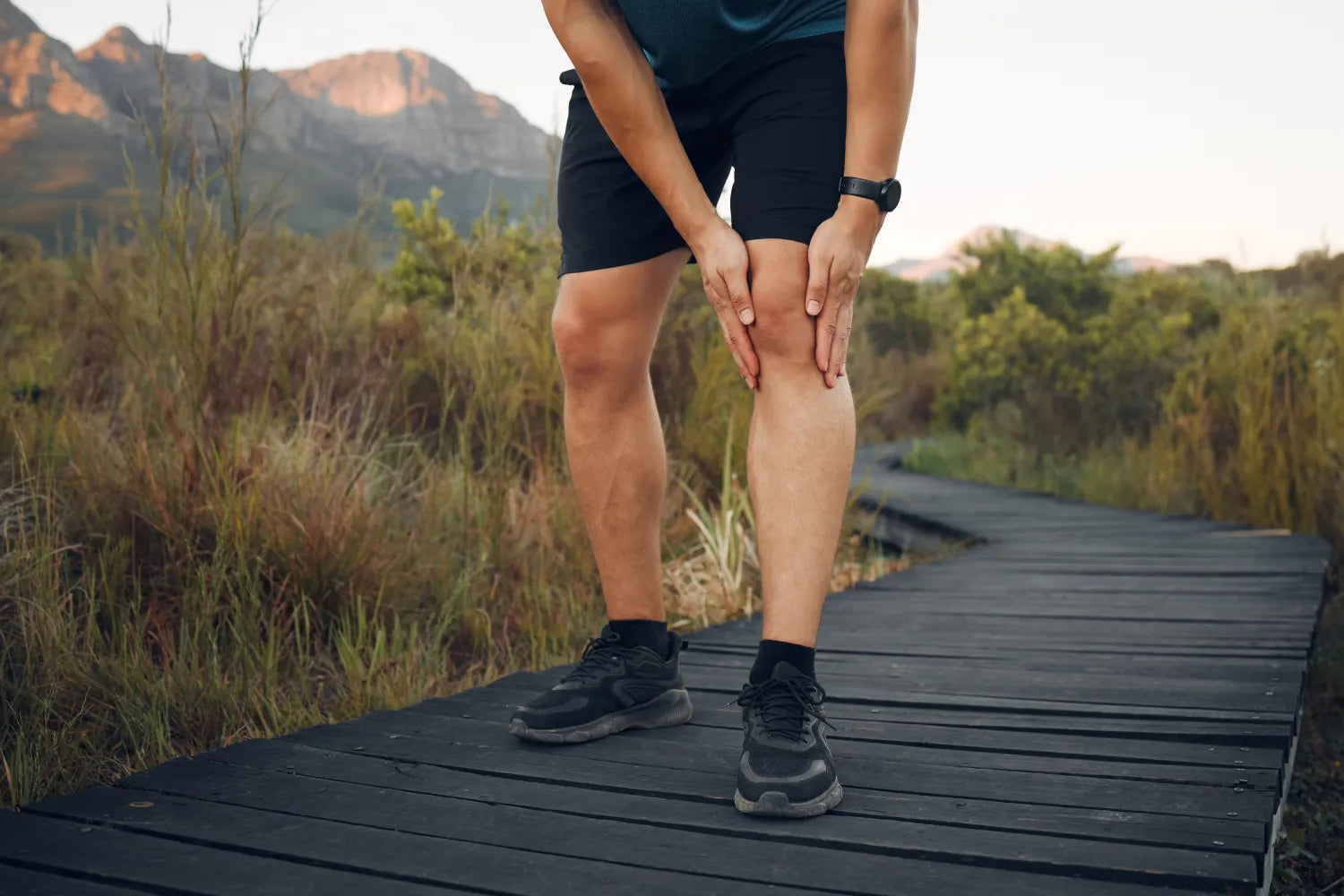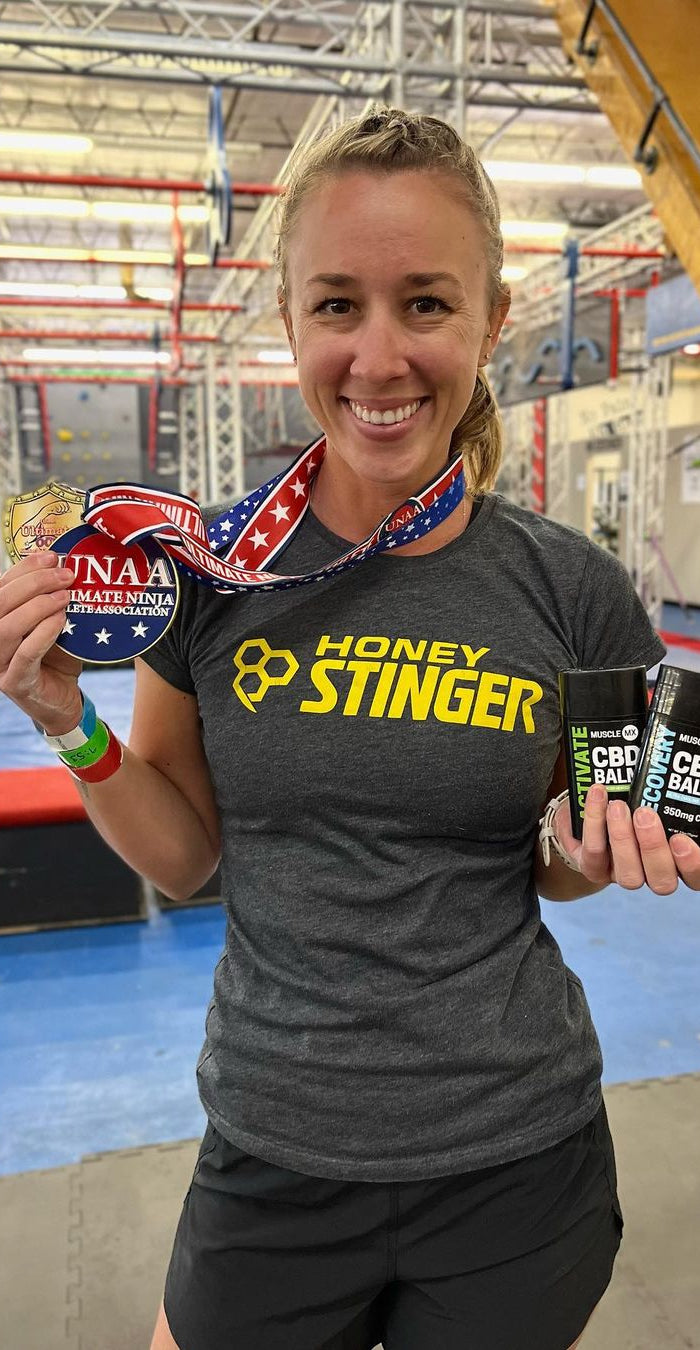Knee Pain After Running: 7 Common Causes & Remedies
|
| Running is a popular way to stay fit, blow off steam, and even catch a natural high. But, it's also a common culprit behind knee pain, a nagging issue that can take the spring out of your stride. It's not something anyone wants, but it's unfortunately common among runners, both seasoned and new. |
However, with a little knowledge, you can understand why your knees might hurt after a run and what you can do about it. Understanding the causes and remedies for knee pain after running is an essential part of maintaining your wellness and keeping you moving.
What Exactly Is Knee Pain?
The knee is a complex joint where the thigh bone (femur), shin bone, and kneecap (patella) come together, held in place by ligaments. It's an essential part of the body's mobility system, and it takes the brunt of the impact every time your foot hits the ground while running.
This can lead to what's often termed runner's knee, or more officially known as patellofemoral pain syndrome. This condition is characterized by pain around the patella and is a sign that something is off in your knee joint.
What Are Common Causes of Knee Pain?
Knee pain after running can be the result of various factors, and it's often a sign that your body is telling you to slow down and pay attention.
Let's take a closer look at some of the most common causes.
1. Overuse Injury
When it comes to running, more isn't always better. Overuse injuries can occur when you push yourself too hard too fast. These are some of the most common injuries among runners and can lead to discomfort in the knee joint.
Overuse can stress the ligaments, leading to micro-tears and inflammation, which can cause pain and discomfort. It's important to listen to your body and give it time to rest and recover to prevent overuse injuries.
2. Iliotibial Band (IT Band) Syndrome
The IT band is a long piece of connective tissue that runs down the outside of your leg, from the hip to the shin.
IT band syndrome is often a result of this band rubbing against the outside of your knee joint, causing irritation. This syndrome is common in runners and can cause discomfort on the outside of the knee, particularly during long runs or downhill running.
3. Patellar Tendonitis (Jumper's Knee)
Patellar tendonitis, also known as jumper's knee, is an injury to the tendon connecting your kneecap (patella) to your shinbone. This tendon is important for the motion of running and jumping, and when it gets inflamed, it can lead to discomfort in the front of the knee.
This condition is common in runners and those who participate in sports that involve a lot of jumping. It's often the result of repeated stress on the patellar tendon, which can lead to micro-tears and discomfort.
4. Meniscus Tear
A meniscus tear is another common cause of knee discomfort in runners. The meniscus is a piece of cartilage that provides a cushion between your femur (thigh bone) and tibia (shin bone). It's like a shock absorber for your knee.
When you tear your meniscus, you might feel a pop, followed by pain and swelling. It's often the result of a forceful twist or rotation of the knee, especially when the foot is firmly planted while the knee is bent. Meniscus tears can range from minor to severe, depending on the extent of the damage.
5. ACL Injury
Your anterior cruciate ligament, or ACL, is one of the key ligaments that help stabilize your knee joint. An injury to the ACL is often quite painful and can sideline a runner for quite some time.
These injuries typically occur due to sudden stops and changes in direction — movements that are more common in sports like soccer and basketball but can also happen during running. It's important to seek the advice of a healthcare provider if you suspect an ACL injury.
6. Osteoarthritis
Osteoarthritis is a degenerative joint disease that can cause knee pain in runners. It happens when the cartilage in the knee joint wears down over time, leading to bone rubbing on bone, which can cause discomfort and stiffness.
While it's more common in older adults, younger athletes can also develop osteoarthritis due to knee injuries or overuse. Running doesn't cause osteoarthritis, but if you already have it, it might exacerbate your symptoms.
7. Chondromalacia Patella
Chondromalacia patella, also known as "runner's knee," is a common cause of knee discomfort. It's the result of damage to the cartilage under the kneecap. This condition causes a dull, aching pain under or around the front of the kneecap where it meets your thigh bone (femur). It's often worse after sitting for a prolonged period or during activities that put pressure on the knee, like running or squatting.
How To Ease Knee Discomfort After Running
Running should feel like a joy, not a chore. If knee discomfort is slowing you down, there are steps you can take to help ease feelings of discomfort and get back to enjoying your runs.
1. Strengthening Exercises
Building strength in your legs can help support your knees and reduce discomfort. Lunges and quadriceps exercises are great options for runners. Lunges help strengthen the quadriceps, hamstrings, and glutes, all of which support the knee.
Quadriceps exercises, like straight leg raises or wall sits, can also help strengthen this important muscle group. If you're new to these exercises or if your discomfort continues, it might be worth consulting a physical therapist. They can provide personalized exercises and ensure you're performing them correctly.
2. Use of Orthotics and Shoe Inserts
The right support can make a world of difference when it comes to knee discomfort. Orthotics and shoe inserts can provide additional cushioning and support, helping to reduce the impact on your knees when you run. They can also help correct running form issues that might be contributing to your discomfort.
Everyone's feet and running styles are unique, so it might take some trial and error to find the right solution for you. When chosen correctly, these little additions to your running shoes can help keep your run smooth and comfortable.
3. Taping Your Knee
Taping is a simple and effective way to provide additional support to the knee and can help manage discomfort associated with running. The tape provides a gentle lift to the skin, which may help to improve circulation and reduce pressure on the knee joint.
A knee brace or compression sleeve can offer similar support by providing a comforting compression to the joint, potentially reducing swelling and improving proprioception, the body's ability to perceive its own position in space, which can help you maintain better form when running.
4. Over-the-Counter Options as Needed
Over-the-counter options like NSAIDs can be used to help manage knee discomfort associated with running. They work by reducing the production of prostaglandins, substances in the body that cause inflammation.
However, while NSAIDs can provide temporary relief, they aren't the best long-term solution due to potential side effects like stomach discomfort and heart issues. They're generally better used for easing discomfort while you address the root cause of your knee issues.
5. Importance of Proper Running Shoes
Never underestimate the power of a good pair of running shoes. They can make a significant difference in how your knees handle the impact of running.
A well-fitted, supportive running shoe can help absorb shock, provide stability, and promote proper running form, all of which can help ease knee discomfort. It's worth taking the time to find a shoe that fits well and suits your running style.
6. CBD for Easing Feelings of Discomfort
CBD, short for cannabidiol, is a compound found in hemp plants that can support your body's endocannabinoid system (ECS). Your ECS plays a key role in maintaining bodily homeostasis or balance, including easing feelings of discomfort. It does this through endocannabinoids and their corresponding receptors, CB1 and CB2.
CBD can support the ECS in maintaining this balance, which can help ease feelings of tension, support the body's response to stress, and encourage recovery. At Muscle MX, our Activate CBD Balm can be used before a run to prepare your muscles and joints, while our cooling Recovery Balm can help soothe your knees after a run, supporting muscle recovery and easing feelings of discomfort.
Note that this is only recommended for more mild cases of knee pain. If your pain persists, consult a healthcare professional.
When To See a Professional for Knee Pain
While knee discomfort is a common issue among runners, it's important to know when it's time to seek professional help. If you're experiencing persistent pain in the front of the knee, or if your discomfort is severe or accompanied by swelling, it might be time to consult a healthcare provider.
Professionals in sports medicine are well-versed in running-related injuries and can provide guidance and treatment options. They may use tools like X-rays to get a clearer picture of what's happening inside your knee joint.
Orthopedic surgeons specialize in the musculoskeletal system and can provide expert advice on injury prevention and treatment. Seeking help early can prevent further damage and get you back on track sooner.
What Are Tips for Preventing Runner’s Knee and Supporting Knee Health?
Prevention is always better than trying to address a problem after it’s already a problem. Here are some tips to help you prevent runner's knee and keep your runs enjoyable:
-
Warm-Up: Always start your run with a good warm-up to prepare your body for the activity.
-
Running Form: Maintain a proper running form to reduce unnecessary stress on your knees.
-
Strengthen Your Muscles: Regularly performing exercises to strengthen your hamstrings and quadriceps can help support your knees.
-
Choose the Right Shoes: Your running shoes should provide good support and fit well to help absorb the impact of running.
-
Consistent CBD Use: Daily use of CBD can support your body's balance and wellness, helping to maintain normal recovery and ease any feelings of tension.
Incorporating these tips into your routine can help protect your knees and make your runs more enjoyable.
The Bottom Line
Knee pain after running is a common issue, but understanding its causes and remedies can help you manage it effectively. It's important to listen to your body and seek professional help when needed. Healthcare providers and orthopedic surgeons can provide valuable advice and treatment options for persistent knee pain.
Incorporating practices like warming up, maintaining good form, strengthening exercises, and using supportive tools like orthotics and CBD products can make a significant difference.
Considering adding CBD to your running repertoire? With our natural, third-party tested CBD products, Muscle MX is committed to helping you feel and perform your best. Browse our collection of CBD products to get started.
Sources:
The Truth Behind ‘Runner’s High’ and Other Mental Benefits of Running | Johns Hopkins Medicine
Knee Joint: Function & Anatomy | Cleveland Clinic
Patellofemoral pain syndrome - Symptoms and causes | Mayo Clinic
An introduction to the endogenous cannabinoid system | PMC










































